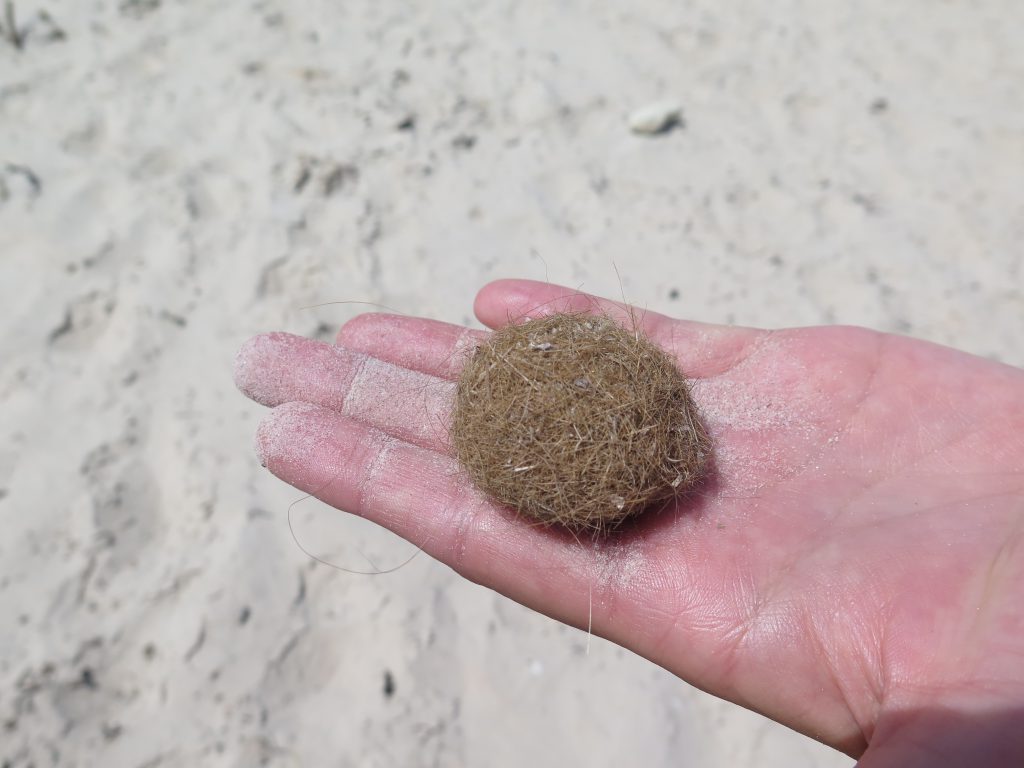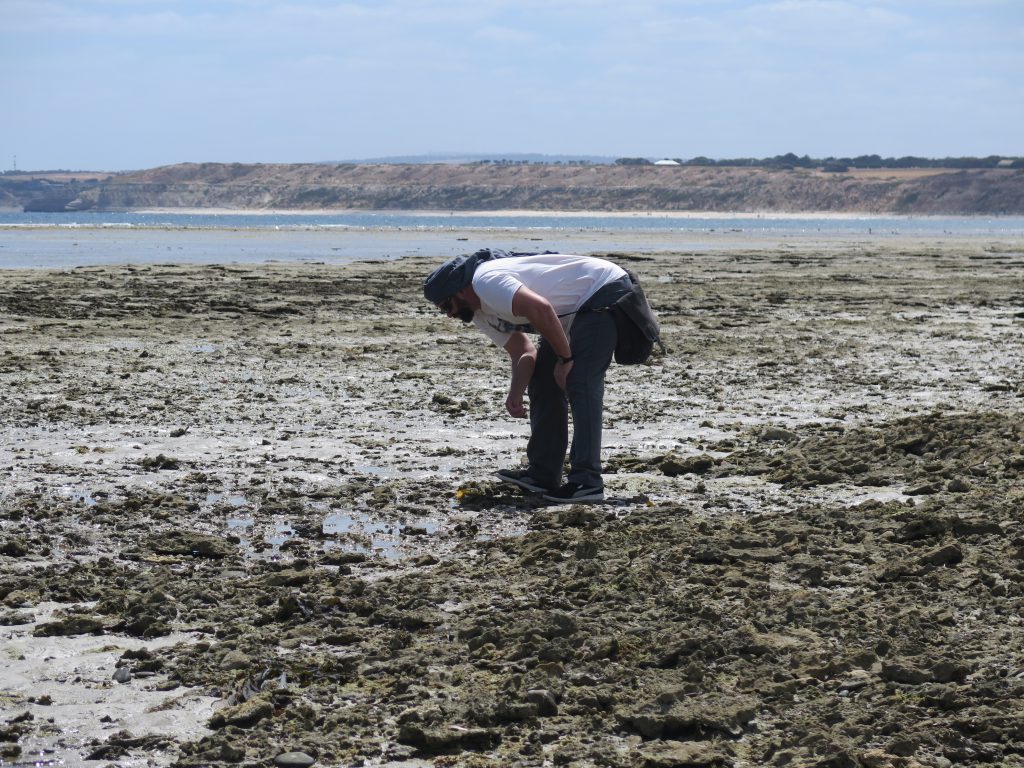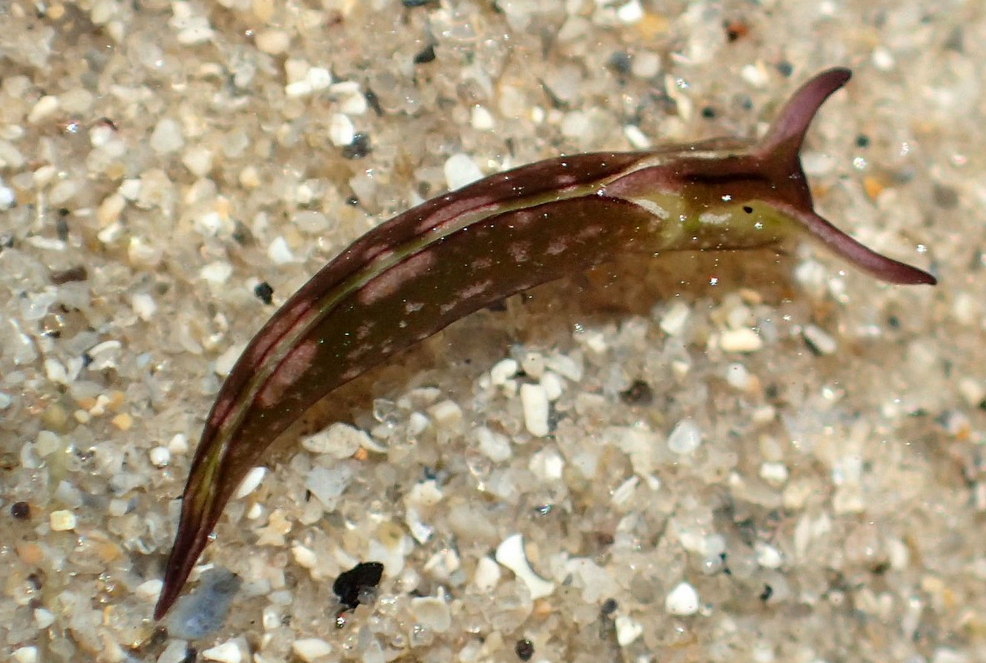It was Sunday the 10th of February 2018. The day dawned a great deal cooler that the previous 40⁰C we had been experiencing in Adelaide that week. A small bus load of tired but happy delegates headed out to visit Aldinga Reef, home of one of ReefWatch SA’s longest running citizen science projects, on the final #CitSciOz18 Road Trip.
Approximately 40 minutes later we arrived at Aldinga Beach where we were met with light winds, sunny skies and our citizen scientist hosts; Neville Hudson and Thelma Bridle.

After a brief chat we donned our old sneakers or aqua shoes and headed down the long winding raised path to the sand below. Once on the sand we marvelled at the hard rolled balls of seaweed on the beach before venturing out on the shifting sharp rocks of the reef.
On the way out to the ReefWatch SA monitoring site citizen scientist, Stuart Harris from Canberra stopped to take a look into one of the many rock pools. He thought he saw something interesting so grabbed his phone and his new Go Micro 60X microscope and started snapping a few pictures. Thelma came over to see what Stuart had found and took a few as well for her own records and later verification.
We were all intrigued by this tiny white spotted green sea slug obviously trying to find food but no one was sure what it was. An ID was needed!

(You can see the video on our Facebook page. If you look very carefully you can even see the moment that Stuart spotted the Elysia australis.)

A week went by and I wondered what happed with the identification of that small green sea slug. I asked Stuart for a copy of the photo and sent it through to our ACSA National Coordinator, Amy Slocombe, to see if anyone at the Australian Museum could provide an ID.
A few hours later an email from Neville popped into my inbox:
“I am following up on your visit to our local reef at Aldinga Beach just over a week ago. One of your colleagues located a sea slug we had not found before. He photographed it with a telephoto lens attached to his telephone. Thelma Bridle, local volunteer, also took a photo and subsequently returned a day or so later and again found the slug. It did take her an hour of searching so this fellow is not common. It has been identified as Elysia australis. With this email find two photos; 0458 was taken when you were on the reef the other, 30461, was two days later. I think you will find the photos and the story behind this fellow interesting.”

Intrigued I jumped over to the Atlas of Living Australia and typed in Elysia australis. Imagine my surprise to find there was only 7 listed records of the species in Australia – one of which was from one of our ACSA members, Libby Hepburn. Yet none of those records appeared to be from South Australia!
Some of those 7 Australian records were quite old too:
- Unknown Collection Date Coolangatta (QLD) Dry specimen held in Museum and Art Gallery of the Northern Territory
- 1983 Perth (WA)
- 1986 Ravensthorpe Area (WA)
- 1988 Albany (WA)
- 1995 Carnarvon (WA)
- 2013 Caloundra (QLD) Dry specimen held in Queensland Museum
- 19th April 2017 Bermagui (NSW) sighted by Libby Hepburn
I excitedly shared my research with Neville and Stuart. If the 2 sightings were uploaded into the Atlas then that would make more of this picture complete. You never know, it could be important!
I hadn’t found out much more about the species by this stage – only that they are found “throughout Australia” which to me seemed a bit vague and didn’t match what I was seeing on the ALA website. Although I did manage to find one page on the defunct Sea Slug Forum which at least had pictures!
Meanwhile I had received an email from Amy, our National Coordinator who had managed, via a colleague Dr Mandy Reid to get an identification. She kindly showed Stuart’s pictures to Dr Richard Willan, Senior Curator of Molluscs, Museum and Art Gallery of the Northern Territory who confirmed the sighting:
“According to Dr Wilan, Elysia australis is the commonly used species name for the native Australian sap-sucking sea slug and that it is already likely recorded from South Australia but overlooked because of its habitat (very high tidal rock pools).”
Neville shared my frustration:
“You asked if the Elysia australis is rare. This was something I wasn’t sure about. I had an information sheet Thelma had sent me and my reference books didn’t help me a lot. From the computer I noticed that there have only been 8 Living Atlas records noted. (I hope I have been reading the Living Atlas site correctly.) However, I went to another site; “Sea Slug Forum” and I found the question from Clare Norton 11th Sept 2000 below:
September 11, 2000
From: Clare Norton
I was wondering if you had a photo of Elysia australis? Also, I have heard that this species is found in rockpools around Sydney and Wollongong. If this is correct, I was wondering if you knew of any localities where they are likely to be found? I am interested because I have to do a project for uni about developing an experiment to sample E. australis. I don’t actually have to conduct the experiment but I have searched for them without success and it would greatly help me to design an experiment if I could actually observe some in the field.
Thanks for your time and help,
Clare Norton
Unfortunately the Sea Slug Forum, once affiliated with the Australian Museum no longer accept new posts as it was discontinued in 2010 according to Wikipedia. Both Neville and I were interested to note that the founder, Bill Rudman wrote:
“Since 1998 when the Forum began I see 14,523 messages have been posted. They range from simple identifications to important new biological discoveries. I had hoped the Forum would be an example of how the world wide web could be a vital tool in bringing amateurs and professional scientists together to learn from each other. I give my thanks to those in the Museum who have supported the site, to my professional colleagues worldwide and all those great and enthusiastic amateurs worldwide, who have made my dream a reality. Unfortunately I had thought this would become a permanent site. I will continue to try and resurrect the site as a functioning forum. If so it will have the same address.
Bill Rudman billr@seaslugforum.net“
Was the SeaSlug Forum an early citizen science project from the Australian Museum? It certainly appeared that way!
Since then Stuart has uploaded his sighting to the Atlas of Living Australia bringing the total up to 8 sightings.
Meanwhile I’m left wondering is the Australian Native Sap Sucking Sea Slug, Elysia australis, actually uncommon or just elusive?

If sea slugs are your thing, you might want to check out the report from the first Melbourne Sea Slug Census, held 21-22 April 2018.

This is very interesting! I often find Elysia coodgeensis, however have never seen E. australis. I was wondering if there are any distinguishing external features between the two species to look out for, as based off the photos provided it looks identical to E.coodgeensis?